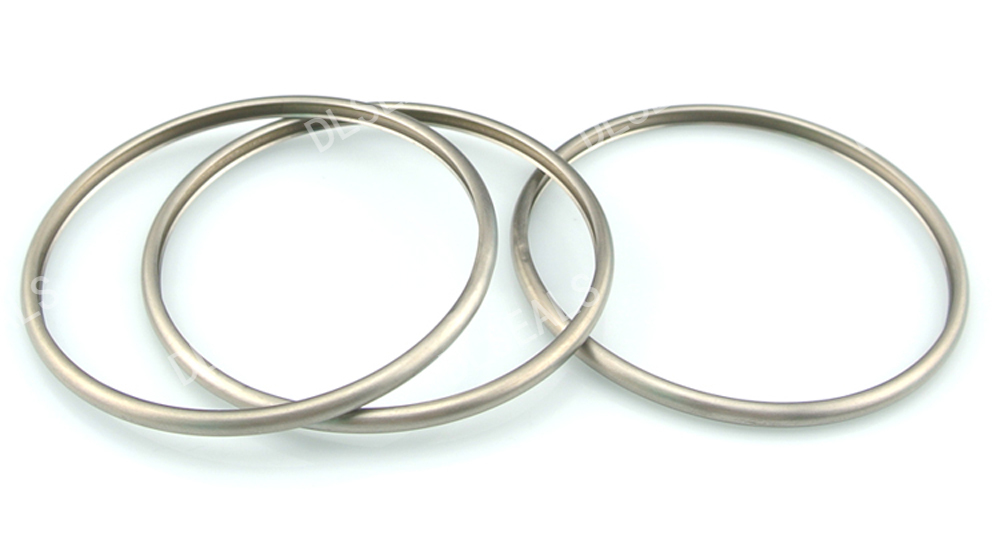
Metal seals are an important sealing component that is widely used in various machinery and industrial equipment. They have excellent high temperature resistance, corrosion resistance and pressure resistance, and are suitable for various harsh working environments. The following is a detailed introduction to the different specifications of metal seals and their application areas.
1. Different specifications of metal seals
Classification by material
Stainless steel seals: Usually made of 304 or 316 stainless steel, with excellent corrosion resistance, suitable for corrosive environments such as chemical industry and food processing.
Aluminum alloy seals: Compared with stainless steel, aluminum alloy is lighter and suitable for applications with weight requirements, such as aerospace and automotive industries.
Copper alloy seals: Copper alloy seals have good thermal conductivity and are suitable for applications in high temperature environments, such as engines and high temperature pump systems.
Classification by shape
C-type seals: Its cross-section is C-shaped and is often used in static and dynamic sealing environments. Suitable for sealing in hydraulic and pneumatic systems.
O-type seals: Common annular cross-section seals, suitable for various static and dynamic sealing occasions. Due to its simple structure, it is widely used.
V-type seal ring: Its cross section is V-shaped, commonly used in hydraulic cylinders and pneumatic cylinders, and can withstand large pressure and temperature changes.
U-type seal ring: It has a U-shaped cross section and is often used in sealing applications that withstand high pressure and high temperature, such as high-pressure pumps and heavy machinery and equipment.
Classification by size
Inner diameter (ID): The inner diameter of the seal ring is an important parameter that determines its scope of application. The selection of the inner diameter size needs to match the diameter of the shaft.
Outer diameter (OD): The outer diameter determines the installation position of the seal ring. The appropriate outer diameter needs to be selected according to the size of the mounting hole.
Section thickness: The section thickness affects the compression amount and sealing effect of the seal ring. When selecting, it is necessary to consider the required compression amount and the adapted working pressure.
2. Application fields of metal seal rings
Automotive industry
Engine: Metal seal rings are used in the cylinder head, crankshaft and camshaft of the engine to prevent oil and gas leakage.
Transmission: Oil seal used for the transmission to ensure the sealing of the lubricating oil inside the transmission and prevent oil leakage.
Suspension system: In the automobile suspension system, metal seal rings can be used to seal components such as shock absorbers.
Aerospace
Aircraft engines: Metal seals are used to seal gas and oil in aircraft engines and can withstand extreme temperatures and high pressure environments.
Hydraulic systems: In aerospace hydraulic systems, metal seals are used to seal hydraulic oil to ensure the normal operation of the system.
Chemical and petroleum industries
Chemical pumps: Metal seals are used in chemical pumps to prevent the leakage of chemical media and can resist corrosive media.
Oil drilling: Used in oil drilling equipment, it can withstand high temperature and high pressure and effectively seal oil and gas.
Food processing
Food processing equipment: Metal seals are used in various food processing equipment, such as mixers, packaging machines, etc., to ensure hygiene and sealing during food processing.
Beverage production: In beverage production lines, metal seals are used to prevent beverage leakage and protect the cleanliness and safety of the equipment.
Industrial machinery
Hydraulic cylinders: Metal seals are used in hydraulic cylinders to withstand high pressure and prevent hydraulic oil leakage.
Fans and pumps: Used for sealing fans and pumps to ensure work efficiency and the normal operation of equipment.
Power equipment
Generators: Metal seals are used in generators to prevent the leakage of grease and coolant and ensure the normal operation of equipment.
Transformer: Used for transformer sealing to prevent leakage of coolant and entry of dust.
Conclusion
Metal seals are widely used in various industrial equipment due to their excellent mechanical properties and environmental resistance. It is crucial to choose the right specifications and materials according to different working environments and requirements. Understanding the different specifications and application areas of metal seals can help make more scientific choices in equipment design and maintenance, thereby improving the performance and reliability of the equipment.
Post time: Aug-28-2024
